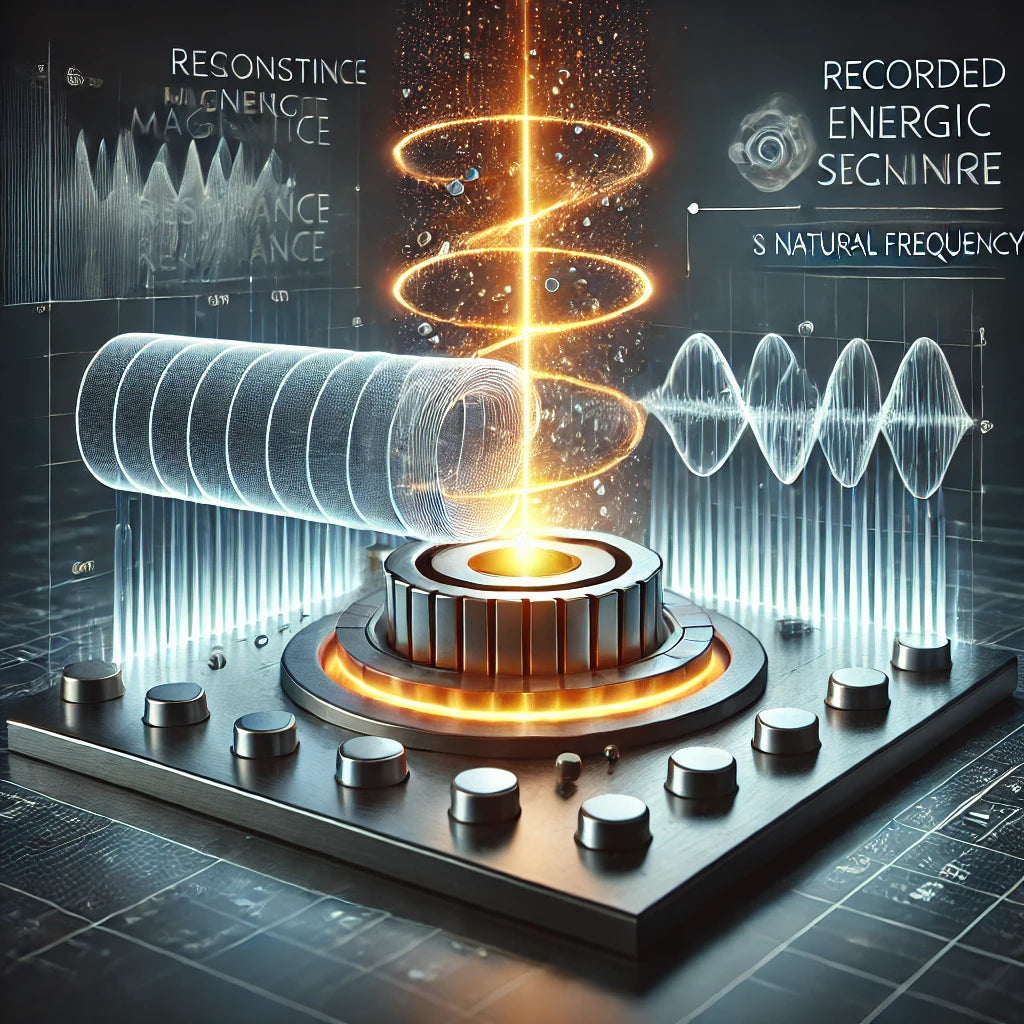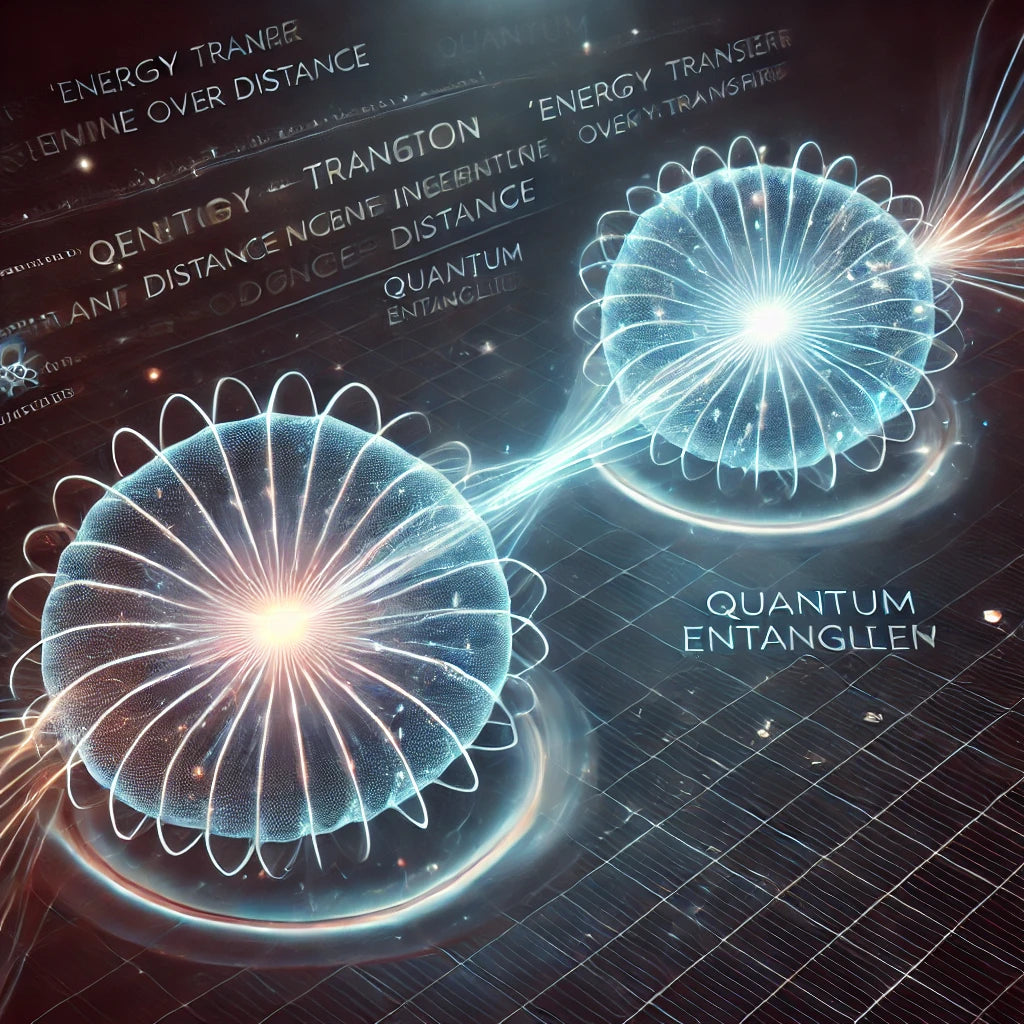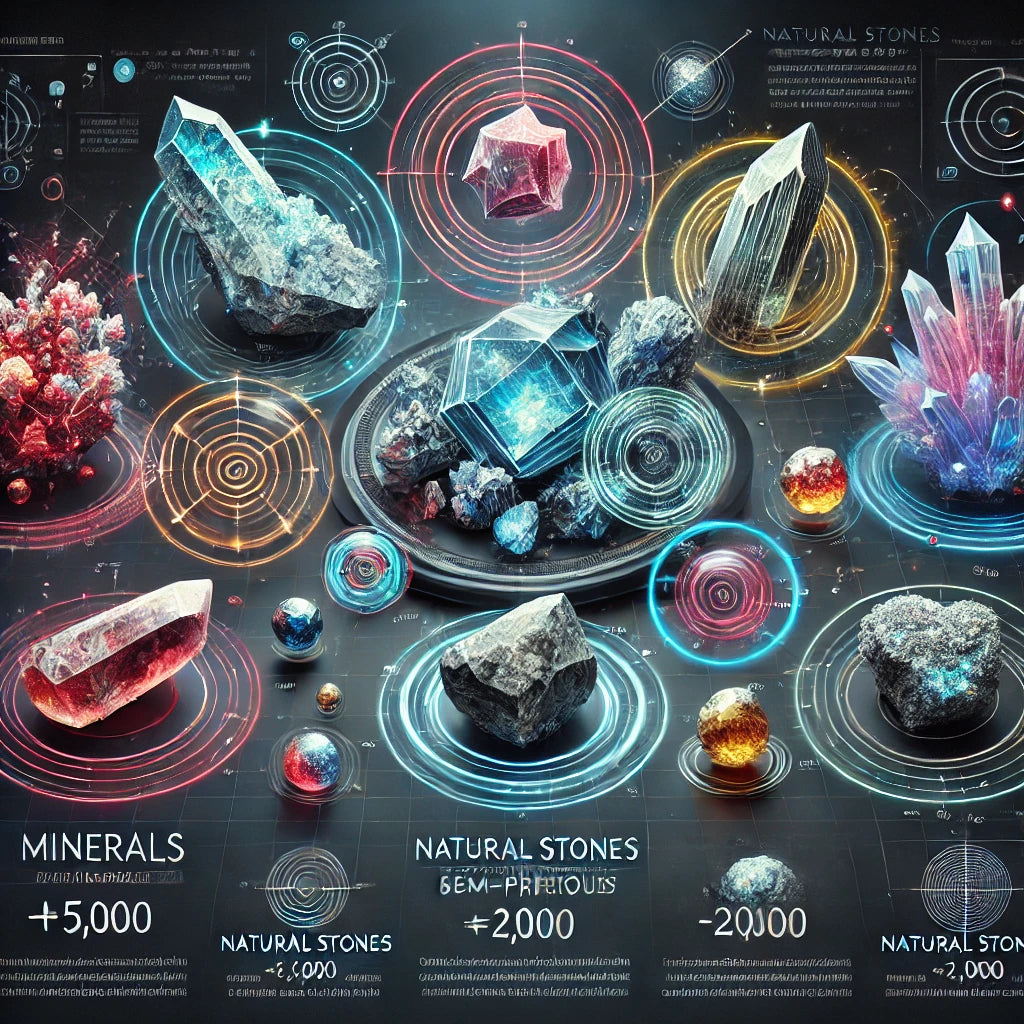
Signed Magnetic Resonance (SMR)
Signed Magnetic Resonance (SMR) is an advanced technology that combines principles of the electromagnetic spectrum and quantum entanglement. It identifies the natural frequencies of matter, converts them into digital signatures stored in a database, and reproduces these frequencies through magnetic resonance. By leveraging quantum entanglement, SMR facilitates energy and information transfer, enabling optimization of physical and biological systems. Its foundation is deeply rooted in scientific disciplines such as electromagnetic resonance, quantum mechanics, and molecular dynamics.

Analysis of Electromagnetic Frequencies
Every material emits specific electromagnetic frequencies due to:
Electron movements,
Atomic bonds and molecular vibrations.
These frequencies are analyzed using mathematical methods such as Fourier Transform, creating a unique frequency profile for the material. This profile, referred to as the "energy signature," distinctly identifies the material at an atomic level.

Recording Energy Signatures
The detected electromagnetic frequencies are:
Representations of the material’s molecular vibration modes and bond energies.
Digitally recorded as "signatures" in a comprehensive database.
These signatures serve as a reference for the system to reproduce precise frequencies later, forming the backbone of SMR technology.

Production of Magnetic Resonance
Using the recorded energy signature, magnetic resonance is produced through carefully calibrated electromagnetic fields:
The generated wave is designed to resonate with the material’s natural frequency.
This resonance creates a harmonic interaction, enabling effective energy transfer and optimization of the material’s energy balance.

Quantum Entanglement and Energy Transfer
One of the most innovative aspects of SMR is its ability to transfer electromagnetic frequencies through quantum entanglement:
Quantum entanglement allows two particles to remain interconnected regardless of physical distance.
SMR encodes the material’s energy signature onto a quantum pair.
This pair enables the transfer of energy and information without the need for physical proximity.
This mechanism allows the material’s energy field to be reproduced in a different location, effectively creating an energy-based copy.

Resonance Interaction and Energy Field Regulation
The resonant waves interacting with the material achieve:
Reorganization of electron movements,
Elimination of energy blockages and optimization of natural energy flow.
This process can restore balance to biological and physical systems.
Scientific Foundations of the Working Principle
-

Electromagnetic Frequencies and Molecular Behavior
Molecular bonds and atomic interactions emit distinct electromagnetic frequencies, as demonstrated through techniques like Raman Spectroscopy.
-

Magnetic Resonance
Magnetic resonance has been extensively utilized in technologies like Nuclear Magnetic Resonance (NMR) and Magnetic Resonance Imaging (MRI) to analyze molecular and atomic vibrations. SMR builds upon these principles to broaden its applications.
-

Quantum Entanglement
The ability of quantum pairs to transfer energy and information across distances has been validated through experiments such as Bell’s Tests. SMR integrates this mechanism into the transfer of energy signatures.
-

Recording and Reproduction of Energy Signatures
The analysis and digitization of electromagnetic frequencies support the creation of databases and reproduction processes. This methodology is firmly grounded in mathematical models like Fourier analysis.
Potential Data Volume Achievable with SMR Technology
The core principle of SMR Technology is identifying the unique electromagnetic frequencies of every entity in the world, digitizing them into "signatures," and storing them in a comprehensive database. This technology has the potential to encompass every object that interacts with human life. Below, we categorize and estimate the possible number of signatures SMR could handle based on known global entities.

Plants
The diversity of plant life is immense, and each species has a unique electromagnetic signature.
Total Plant Species: ~390,000
Subcategories:
Medicinal Plants: ~50,000
Tree Species: ~60,000
Flowering Plants: ~300,000
Agricultural Crops (Fruits, Vegetables): ~10,000

Minerals and Natural Stones
Natural minerals and stones emit unique electromagnetic signatures due to their chemical composition and crystalline structures.
Minerals: ~5,000
Natural Stones (Precious and Semi-Precious): ~2,000

Elements
Elements, as the fundamental building blocks of the universe, emit distinctive electromagnetic frequencies.
Known Elements: 118
Natural Elements: 94
Synthetic Elements: 24

Microorganisms
Microorganisms are essential to biological processes and life, each carrying unique signatures.
Bacteria Species: ~30,000
Fungi Species: ~150,000
Virus Types: ~10,000

Chemical Compounds
Chemical substances and compounds are central to human interaction and life processes.
Vitamins: ~30
Acids: ~500
Essential Oils: ~200
Soaps and Cleaning Products: ~1,000
Vinegars and Fermentation Products: ~300

Animal Species
Animals are fundamental components of agriculture, domestic life, and natural ecosystems.
Total Animal Species: ~8,700,000
Mammals: ~5,500
Birds: ~11,000
Insects: ~1,000,000
Reptiles and Amphibians: ~15,000
Fish: ~34,000

Agricultural Products and Derivatives
Grains and Legumes: ~200
Oilseeds: ~50
Forage Crops: ~500

Medicines and Therapeutic Substances
Modern and traditional medical practices involve chemical and biological therapies.
Human Medicines: ~15,000
Veterinary Medicines: ~5,000
Plant Treatment Products: ~5,000

Water and Environmental Factors
Environmental elements like water, air, and soil possess distinct electromagnetic signatures.
Freshwater Sources: ~200 (major rivers and lakes)
Ocean Species (Plankton, Aquatic Plants, Marine Animals): ~1,000,000

Food and Ingredients
Food substances and processed products directly affect daily human life.
Food Components: ~20,000
Spices: ~200
Processed Foods: ~10,000
Natural Sugars and Carbohydrates: ~500
Estimated Total Number of Signatures
Combining all these categories, SMR Technology has the potential to handle:
~10,000,000 - 15,000,000 unique signatures.
Summary
SMR Technology represents the capability to identify, record, and reproduce the unique electromagnetic frequencies of virtually every entity on Earth. With its vast potential database, it could revolutionize scientific research and everyday applications, providing a deeper understanding and optimization of the energy levels of all entities. This technology offers a groundbreaking opportunity for the future of energy-based interactions and systems.
Signed Magnetic Resonance (SMR) is a technology that identifies, records, and reproduces the unique electromagnetic frequencies of matter. Through magnetic resonance and quantum entanglement, it transfers energy and information to optimize biological and physical systems. This scientifically backed method offers revolutionary potential for energy transfer, information exchange, and resonance-based optimization.



